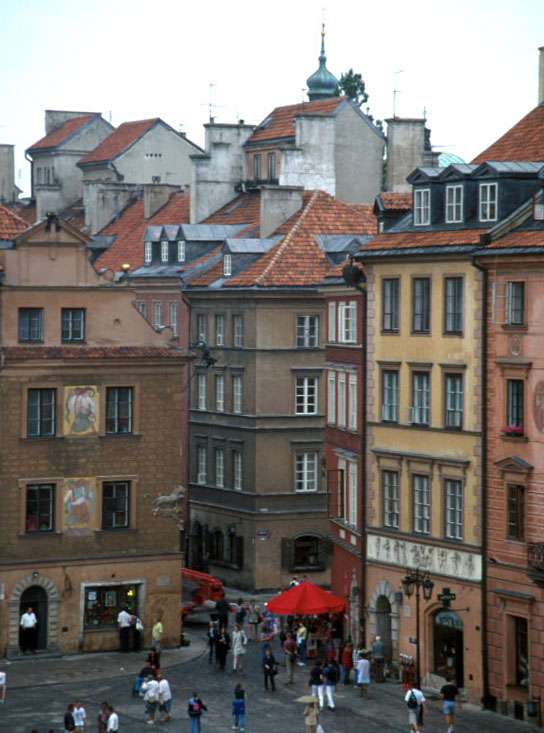Adaptive reuse


The Old Town in Warsaw was rebuilt from ruins, so it is at most around fifty years old. I saw 1953 on one weathervane, and some work wasn't finished until the 1970s. When the Poles rebuilt the old buildings they didn't make them precisely as they were in 1939. They left off additions and changes that had been made over the years. The result is more authentic in one sense and less so in another. The houses around the central square in Warsaw's Old Town look separate, but on one whole side of the square the rooms behind the facades of the row of houses have all been connected and made into the Museum of the City of Warsaw. The whole Old Town looks about the same age, because it is about the same age, yet it has styles from various medieval and early modern periods. That's one reason it feels a bit like a theme park. How do we distinguish adaptive reuse from theming? The Old Town facades are all clean and the street paving neat and the colors brighter than in the other towns we saw. Now all the Old Towns are being repaired after fifty years of neglect. Is dirt and chipped stucco and uneven street paving part of their ambience?
(c) David Kolb, 1 August 2001